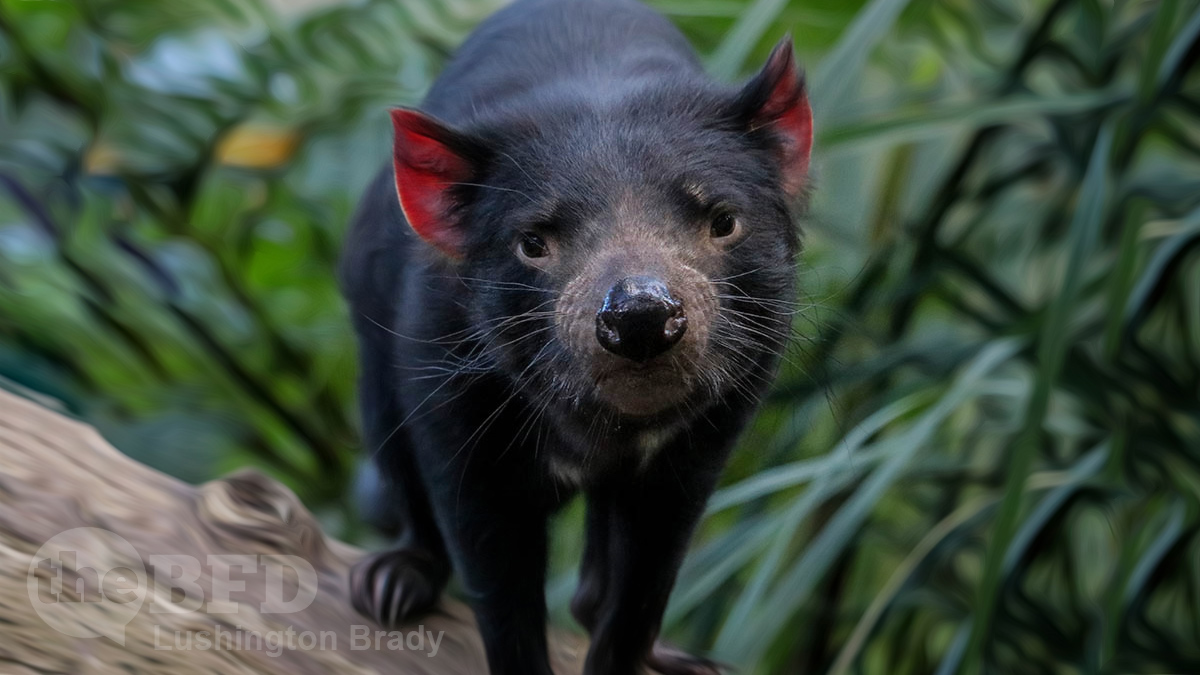Despite having lived in Tasmania for 16 years, I’ve only seen the famous Tasmanian devil in the wild twice. Both were shortly after I moved here.
I happened to move to Tasmania right about the time that the devastating Devil Facial Tumor Disease was first becoming widespread. Since then, an estimated 90% of the wild population has been wiped out.
The disease is an incredibly rare example of a cancer that spreads by infection – only three are known in the entire animal kingdom. The main reasons the disease has been so devastating for the devils are, firstly, their distinctive behaviour: devils bite. A lot. Especially each other, around the face.
The second is that devils have notably low genetic diversity, so once the disease emerged, the likelihood of other devils having natural immunity seems to have been practically nil.
That low genetic diversity is a result of the devils’ 5000 year isolation on the island. When sea levels rose at the end of the last Ice Age, they flooded what was once an arid plain and cut Tasmania off from the Mainland for good. The Mainland population died out 2000 years later.
The devils first disappeared from mainland Australia 3,000 years ago. Then, they were ravaged by dingoes. Asian seafarers likely introduced the dingoes to Australia, which made quick work of the fierce but smaller Tasmanian devils.
Since then, Tasmanian devils have only appeared on the island of Tasmania. But even there — safe from dingoes — their existence has been precarious.
There is strong evidence that the species suffered a population collapse in the late 1800s. They clearly bounced back, but genetic diversity would have been further reduced, making them eventually more vulnerable to DFTD.
Since the DFTD first came to attention, there have been multi-pronged efforts to save the devils from extinction, including breeding captive populations on islands, in quarantine as it were.
Another effort is re-introducing devils where they haven’t been seen for three millennia.
Conservationists were over the moon at the birth of seven baby Tasmanian devils on mainland Australia […]
The seven babies — called “joeys” — were born at the 988-acre Barrington Wildlife Sanctuary in New South Wales, north of Sydney. Their birth follows a concerted effort by conservation groups to return Tasmanian devils to the continental mainland.
“We have been working tirelessly for the better part of 10 years to return devils to the wild of mainland Australia with the hope that they would establish a sustainable population,” announced the conservation group Aussie Ark after the joeys’ birth.
The Aussie Ark program is notable in that Barrington Wildlife Sanctuary is a 400ha enclosed wilderness carefully rid of introduced predators and noxious weeds. So, essentially, 26 devils have been turned loose in the wild on the Mainland and left to breed for themselves.
Waiting for the devils to breed was “nerve-wracking,” said Tim Faulkner. But patience paid off. The freed Tasmanian devils bred together and gave birth to joeys in mainland Australia — for the first time in 3,000 years.
“We had been watching them from afar until it was time to step in and confirm the birth of our first wild joeys,” Faulkner enthused. “And what a moment it was!”
Up to four joeys will remain in their mother’s pouch for about four months, and then take another six months to become independent. Hopefully, they will continue to be fruitful and multiply.
A further hope is that the devils will be aggro enough to fight back with foxes and cats. Although they’re not generally predators, being rather scavengers, devils are notorious for their crushing bite.
“Having a population of devils away from the diseased landscape in Tasmania is crucial,” Faulkner explained. But he also pointed out that saving the Tasmanian devils could also help save Australian wildlife in general.
“By having devils back in the environment,” he said, “they help regulate introduced feral pests like the fox and cat.”
Don Church, the president of conservation NGO Re:wild — which also supported the reintroduction of Tasmanian devils to mainland Australia — agrees.
“This doesn’t just bode well for this endangered species, but also for the many other endangered species that can be saved,” he said.
“Tasmanian devils are ecosystem engineers that can restore and rebalance the wild to the benefit of other native wildlife, to the climate, and to people.”
All That’s Interesting
What of the devils in their homeland, Tasmania?
A few years ago, I interviewed a biologist studying devils and the DFTD. He was upbeat. “The devils will bounce back,” he said. “No worries.” Increased reports of devils showing up as roadkill in even inner Hobart suggests that, hopefully, he was right.
Please share this article so that others can discover The BFD

